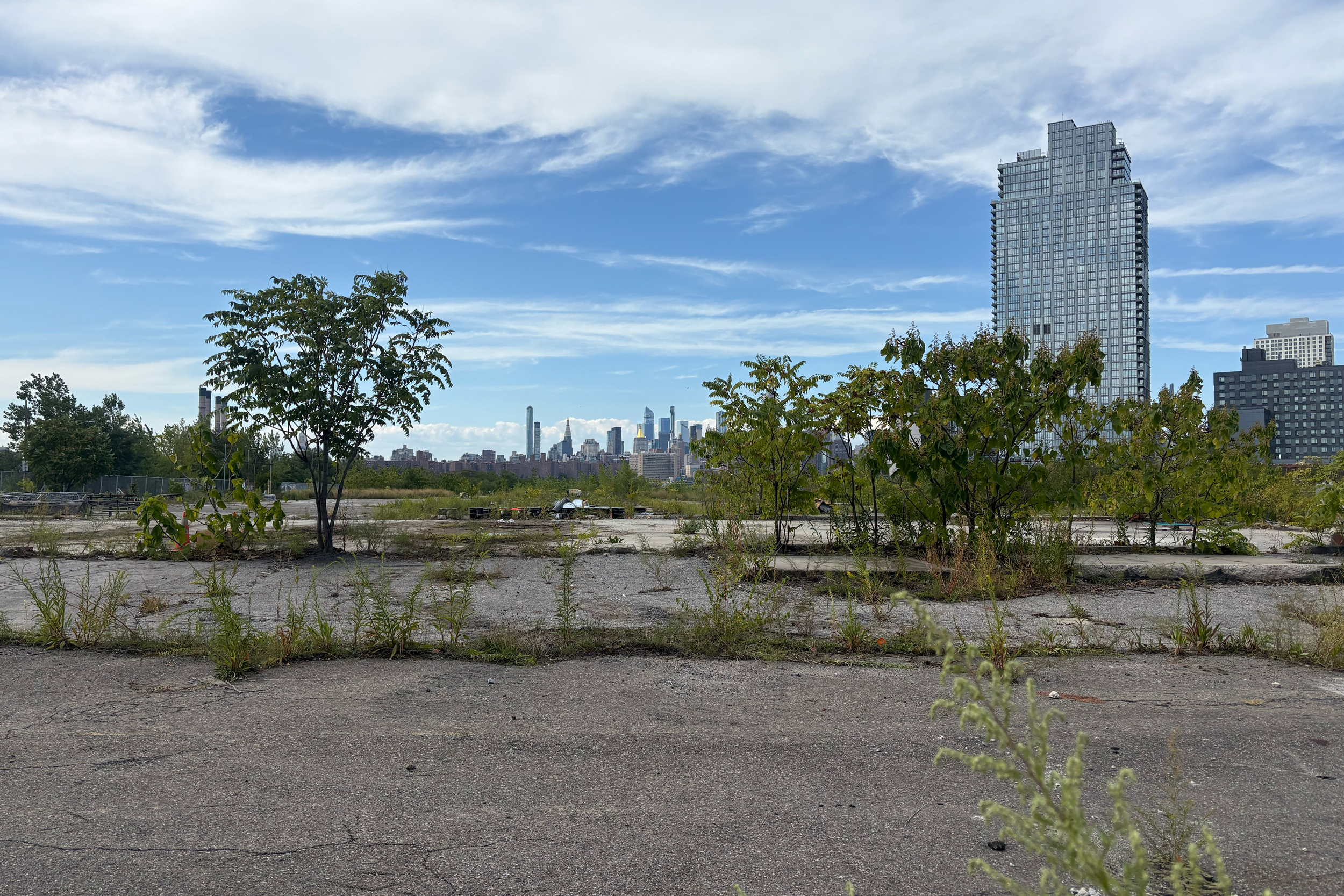Report on the New York City Open Streets Program and its Alignment with Sustainable Development Goals
Program Overview and Contribution to Sustainable Cities (SDG 11)
The New York City Department of Transportation (NYC DOT) has initiated the application process for the 2026 Open Streets program. This initiative is a critical component of the city’s strategy to advance Sustainable Development Goal 11 (Sustainable Cities and Communities) by reimagining urban roadways as inclusive, safe, and accessible public spaces. The program, which currently supports over 200 locations across the five boroughs, invites community-based organizations, educational institutions, and businesses to become partners in this urban transformation. By converting streets into pedestrian- and cyclist-prioritized zones, the program directly contributes to creating resilient and sustainable urban environments for all residents.
Key Objectives and SDG Linkages
The Open Streets program is designed to achieve multiple sustainability objectives, directly aligning with several UN Sustainable Development Goals:
- Good Health and Well-being (SDG 3): The program promotes active lifestyles by providing safe areas for walking, cycling, and recreation. This contributes to improved physical and mental health and can lead to reduced air pollution in localized areas.
- Quality Education (SDG 4): With record participation from schools, the initiative creates safe, car-free zones that function as spaces for outdoor learning, recreation, and community engagement for students.
- Decent Work and Economic Growth (SDG 8): By fostering pedestrian-friendly commercial corridors, Open Streets stimulate local economies, support small businesses, and enhance economic development in participating neighborhoods.
- Reduced Inequalities (SDG 10): NYC DOT is committed to the equitable expansion of the program, ensuring that the benefits of enhanced public space, improved safety, and community building are accessible to neighborhoods across the city.
- Climate Action (SDG 13): The program encourages sustainable modes of transportation, such as walking and cycling, over personal vehicle use, thereby contributing to the reduction of greenhouse gas emissions.
- Partnerships for the Goals (SDG 17): The program’s operational model is founded on multi-stakeholder partnerships between the NYC DOT and local community groups, businesses, and schools, embodying the collaborative approach essential for achieving the SDGs.
Strategic Infrastructure Redesigns for Enhanced Sustainability
To solidify the program’s long-term contributions to urban sustainability, NYC DOT is implementing permanent redesigns of select Open Streets. These projects involve traffic calming measures and streetscape enhancements to create world-class public spaces that prioritize pedestrians and cyclists. This commitment to infrastructure change ensures lasting progress towards SDG 11. Redesigns for the current year include:
- 34th Avenue, Queens
- 31st Avenue, Queens
- Broadway, Manhattan
- Woodside Avenue, Queens
- 29th Street Plaza, Queens
- Montague Street, Brooklyn
- Murdock Plaza, Queens
Application Process and Partnership Model (SDG 17)
The 2026 application process empowers local stakeholders to become stewards of their public spaces. This collaborative framework is a direct implementation of SDG 17, leveraging local expertise to manage streets for diverse uses, including cultural programming and outdoor dining. An online information session will be held on November 13, 2026, to support prospective partners.
Application Deadlines
- January 31, 2025: Deadline for all new Open Streets (Limited Local Access or Full Closure) proposed to launch in 2026.
- January 31, 2026: Deadline for School Open Streets proposed to launch during the summer of 2026.
- March 31, 2026: Extended deadline for School Open Streets proposed to launch at the start of the 2026-2027 academic year.
Stakeholder Impact Assessment
Reports from existing community partners indicate significant positive outcomes aligned with the program’s sustainability goals. Key impacts include:
- Enhanced Community Cohesion: The program transforms streets into gathering spaces, strengthening neighborhood bonds and fostering a shared sense of place.
- Improved Public Safety and Well-being: Partners report the creation of safe environments where families and children can engage in outdoor activities.
- Local Economic Vitality: The initiative has been credited with bringing vibrancy and increased foot traffic to commercial corridors, supporting local merchants.
- Cultural Preservation and Diversity: Open Streets serve as accessible public stages for cultural programming that promotes diversity and heritage, particularly in environmental justice areas.
Analysis of Sustainable Development Goals in the Article
1. Which SDGs are addressed or connected to the issues highlighted in the article?
-
SDG 3: Good Health and Well-being
- The article highlights the creation of public spaces that allow for recreation and community connection. By providing safe areas for pedestrians and cyclists, and spaces where “children can experience the kind of joyful, outdoor childhood,” the program promotes physical activity and mental well-being, which are central to SDG 3.
-
SDG 4: Quality Education
- The program has a specific focus on schools, with the article noting a “record number at schools” participating. It provides opportunities for “outdoor learning/recreation for schools,” thereby enhancing the learning environment and contributing to quality education.
-
SDG 8: Decent Work and Economic Growth
- The initiative is explicitly designed to “promote economic development” and “support local businesses.” The quote from the 5th Avenue Open Streets Merchants Association confirms this, stating that families “come together and play, dine and shop,” which boosts local economic activity.
-
SDG 10: Reduced Inequalities
- The article mentions a commitment to “equitably expand our program in neighborhoods across the city.” Furthermore, it highlights a partner’s work in “environmental justice areas” and designing spaces that consider “language barriers and disabilities,” directly addressing the goal of creating inclusive communities and reducing inequalities.
-
SDG 11: Sustainable Cities and Communities
- This is the most prominent SDG in the article. The entire Open Streets program is about making cities more inclusive, safe, resilient, and sustainable by “reimagining the use of streets as public spaces,” prioritizing pedestrians and cyclists, improving safety through traffic calming, and building a “stronger sense of community.”
-
SDG 17: Partnerships for the Goals
- The program’s model is built on collaboration. The NYC DOT actively invites and works with “Community-Based Organizations, Schools, Businesses, and Other Prospective Partners” to manage the Open Streets. This multi-stakeholder partnership is a core principle of SDG 17.
2. What specific targets under those SDGs can be identified based on the article’s content?
-
Target 11.7: Provide universal access to safe, inclusive and accessible, green and public spaces.
- The program’s primary goal is to convert streets into public spaces for community use, cultural programming, and recreation. The article states the program provides “more public space for New Yorkers” and transforms streets into “vibrant, welcoming” gathering spaces, directly aligning with this target.
-
Target 11.2: Provide access to safe, affordable, accessible and sustainable transport systems for all, improving road safety.
- The article mentions redesigning streets with “traffic calming measures” to “better prioritize pedestrians and cyclists.” This focus on creating safer mobility options for non-motorized transport contributes directly to improving road safety and creating sustainable transport systems.
-
Target 11.3: Enhance inclusive and sustainable urbanization and capacity for participatory, integrated and sustainable human settlement planning and management.
- The program is a participatory model where NYC DOT “works with community partners” who “become stewards of their local streets.” This community-led approach to planning and managing public space exemplifies the participatory planning described in this target.
-
Target 17.17: Encourage and promote effective public, public-private and civil society partnerships.
- The article details how the NYC DOT partners with a wide range of stakeholders, including community organizations, businesses, and schools. The entire application process is designed to foster these partnerships to achieve the program’s goals, making it a clear example of this target in action.
-
Target 4.a: Build and upgrade education facilities that are child, disability and gender sensitive and provide safe, non-violent, inclusive and effective learning environments for all.
- By creating “School Open Streets,” the program extends the learning environment beyond the classroom into safe, car-free outdoor spaces for “outdoor learning/recreation,” thus upgrading the effective learning environment for students.
3. Are there any indicators mentioned or implied in the article that can be used to measure progress towards the identified targets?
-
Number of Open Streets:
- The article explicitly states that “NYC DOT supports more than 200 Open Streets at locations throughout the city.” This is a direct quantitative indicator of the program’s scale and reach.
-
Number of participating schools:
- The article highlights a “record number at schools” participating in the program. This serves as a specific indicator for measuring the program’s success in engaging the education sector (Target 4.a).
-
Number of redesigned streets and permanent plazas:
- The article lists specific streets (e.g., 34th Avenue, Broadway) that are being redesigned and notes that Kensington Plaza was “transformed into a permanent pedestrianized space.” The number of such permanent infrastructure changes is a key indicator of long-term impact.
-
Geographic and equitable distribution:
- The commitment to “equitably expand our program in neighborhoods across the city” and work in “environmental justice areas” implies that the number and percentage of Open Streets in underserved communities is a crucial indicator of progress towards reducing inequality (SDG 10).
-
Number and diversity of community partners:
- The article calls for applications from “Community-Based Organizations, Schools, Businesses, and Other Prospective Partners.” The number of applications received and the diversity of active partners are indicators of the strength of the partnerships (Target 17.17).
4. Table of SDGs, Targets, and Indicators
| SDGs | Targets | Indicators |
|---|---|---|
| SDG 3: Good Health and Well-being | Promote mental health and well-being. | Number of community-building events (e.g., Trick-or-Streets, cultural programming). |
| SDG 4: Quality Education | 4.a: Build and upgrade education facilities to provide safe and effective learning environments. | Number of “School Open Streets” created for outdoor learning and recreation. |
| SDG 8: Decent Work and Economic Growth | Promote policies that support local businesses and economic development. | Number of participating local businesses and merchant associations. |
| SDG 10: Reduced Inequalities | Promote social and economic inclusion of all. | Geographic distribution of Open Streets across different neighborhoods, including “environmental justice areas.” |
| SDG 11: Sustainable Cities and Communities | 11.7: Provide universal access to safe, inclusive and accessible public spaces. | Total number of Open Streets created (“more than 200”). |
| 11.2: Provide access to safe and sustainable transport systems, improving road safety. | Number of streets redesigned with traffic calming measures to prioritize pedestrians and cyclists. | |
| 11.3: Enhance inclusive and sustainable urbanization and participatory planning. | Number of community partners actively managing Open Streets. | |
| SDG 17: Partnerships for the Goals | 17.17: Encourage and promote effective public, public-private and civil society partnerships. | Number and diversity of applications from community organizations, schools, and businesses. |
Source: nyc.gov







